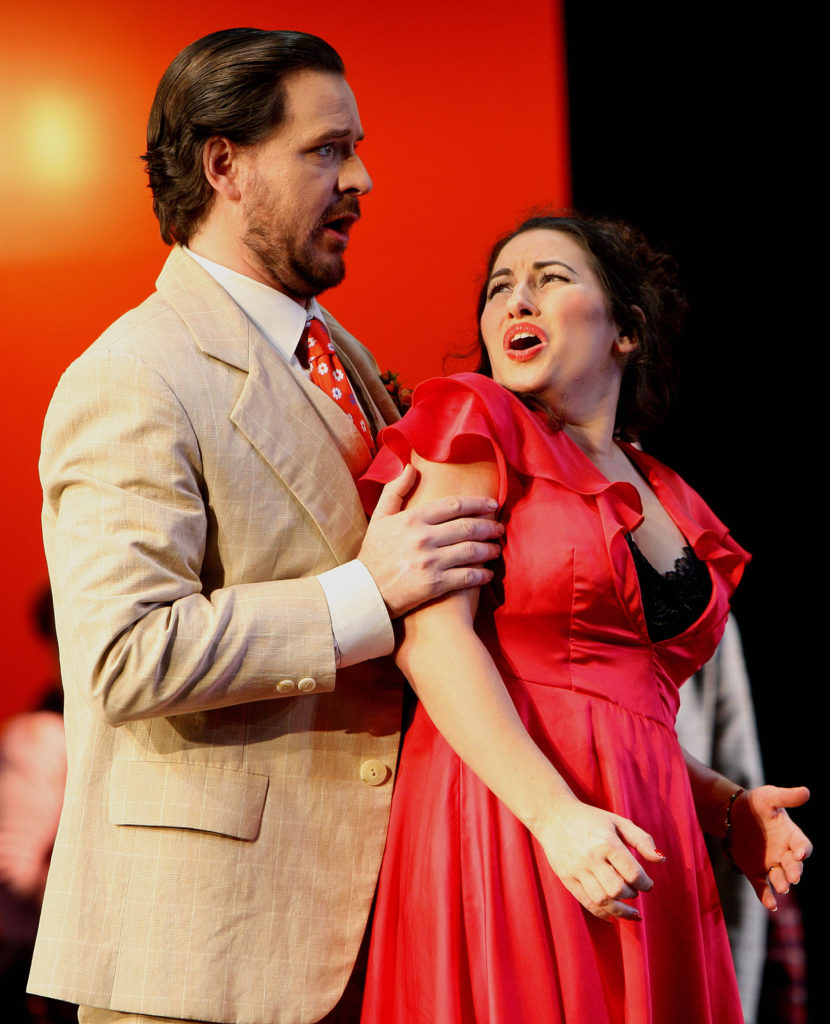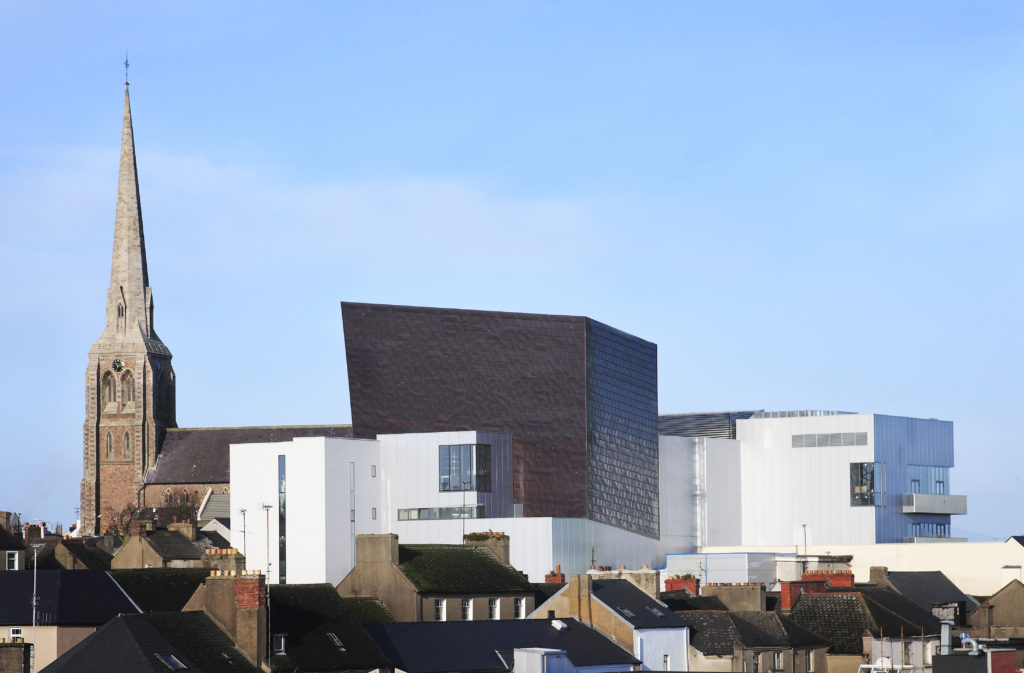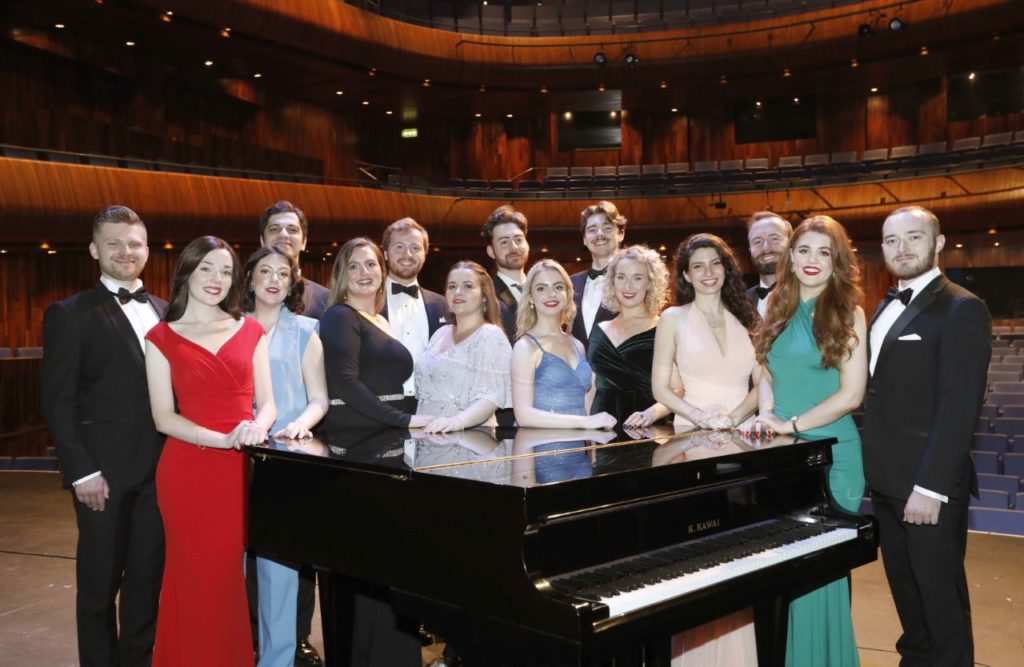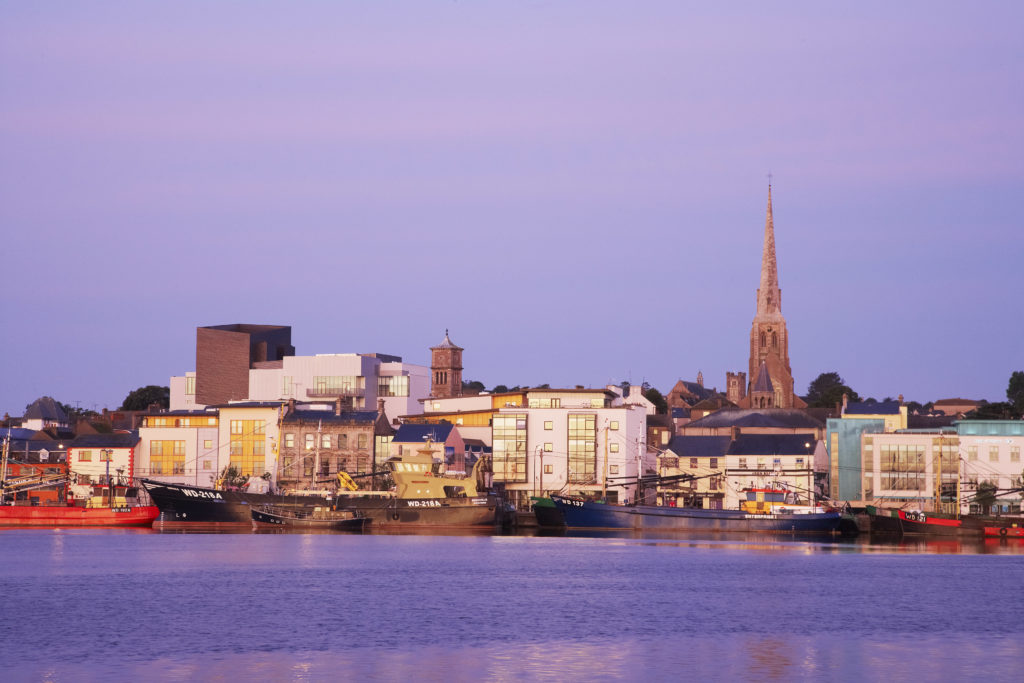The Wexford Opera Festival begins next week on October 21, running until November 5. MAL ROGERS looks at the background to the festival and gives the lowdown on what to expect this year
WHEN someone starts singing after being stabbed, it’s an opera. That’s the quick definition.
But of course there’s rather more to it than that. Opera can be regarded as the greatest synthesis of art ever created — the culmination of music, theatre, story, scenery, lighting, design, drama, and coughing.
The world of opera at its very best features some of the greatest music ever written. Its comedies and tragedies, its highs and lows reflecting the human experience, its beauties and splendours — all will transport you to a different place where you’ll be unaware of the rest of the audience, no matter how susceptible to throat infection.
And according to some musicologists, it all came about through a mistake.
 Richard Anderson (L) who plays Masetto is joined by Amy Wilkinson (R) who plays Zerlina during a rehearsal of Motzart's Don Giovanni at the Sydney Opera House on July 3, 2008. Don Giovanni, the new production from Opera Australia which opens in Sydney on July 5, has been described as a perfect opera whose central character is the notorious womaniser who rampages his way through Europe taking his pleasure wherever he goes. AFP PHOTO / Greg WOOD (Photo credit should read GREG WOOD/AFP via Getty Images)
Richard Anderson (L) who plays Masetto is joined by Amy Wilkinson (R) who plays Zerlina during a rehearsal of Motzart's Don Giovanni at the Sydney Opera House on July 3, 2008. Don Giovanni, the new production from Opera Australia which opens in Sydney on July 5, has been described as a perfect opera whose central character is the notorious womaniser who rampages his way through Europe taking his pleasure wherever he goes. AFP PHOTO / Greg WOOD (Photo credit should read GREG WOOD/AFP via Getty Images)If true, in the long history of errors there can have been few more serendipitous blunders. The story goes that musicians in 16th century Florence mistakenly believed the ancient Greek tragedies were originally sung, and accordingly set about trying to recreate that. In their misguided endeavour they invented a new art form.
But opera also has roots in early Christianity. Religious orders had begun, probably by the beginning of the Middle Ages, to stage plays to convey the message of the bible. At least 1,000 years ago, Western Europe had developed a tradition of liturgical dranas that included music to increase the pulling power of the Church’s productions.
But it was in Florence that opera took a secular turn, subsequently attracting infl uences ranging from classical Western music, commedia dell’arte, Eastern music, Neapolitan comic operas, Venetian drama. This mélange propelled opera onto the world stage, from whence it eventually made its way to Wexford.
Very soon, this sleepy old harbour town would become renowned for holding a world-class festival. It is no exaggeration to say that the annual event developed into the biggest thing to hit Wexford since the Vikings sailed up the Slaney estuary in 800AD.
 Weford Festival Opera and Wexford Opera House images 2008.
Weford Festival Opera and Wexford Opera House images 2008.
The libretto in Wexford
The festival began in 1951 under the direction of Tom Walsh, a local doctor, writer and director who gathered together a group of like-minded opera lovers to stage a modest gathering.
They had ben galvanised into action by a visit to Ireland in 1950 by Compton Mackenzie, a lifelong Scottish nationalist, and author of the novels Whisky Galore and Monarch of the Glen. MacKenzie was also an erudite writer on music, who gave a lecture in November 1950 to Wexford’s cultural society the Study Circle.
Mackenzie suggested the society stage opera in the Theatre Royal, subsequently the festival’s permanent venue until 2005.
From these beginnings, the Wexford opera ethos was fashioned — the festival would breathe new life into forgotten works and give recognition to obscure masterpieces.
It would not take a historian or sociologist to work out that launching a cultural festival in Ireland in the 1950s was a massively daunting task. Ireland existed on a subsistence economy, and moreover censorship was rife.
When the Belfast Arts Theatre brought Jean Paul Sartre’s Huis Clos to Dublin in 1951, they were instructed by the governors of the Royal Irish Academy — the venue for the performances — to remove Sartre’s name from all publicity and programmes.
This was on the grounds that the Frenchman’s religious beliefs (or lack of them) might prove offensive to Irish audiences.

Later, in mid 1951 a show which featured ‘Hawaiian serenaders’ and accompanying hula hula dancers (in reality from England) was cancelled after clergy ruled that the ‘lightlyclad girls’ were likely to undermine the public morals of the country.
Meanwhile, Orson Welles was picketed for ‘being a Communist’ by the Catholic Cinema and Theatre Patrons Association when he attended Maura Laverty’s Tolka Row in Dublin.
It was against this less than open-minded background that the Wexford Opera Festival was launched.
But despite the beady eyes of censors and clergy focusing on the probity of the productions, it was money which was the real bugbear.
The Irish government had few spare funds, and they were certainly not minded to give much of it to a fl dgling opera festival — an entirely ‘foreign’ pursuit.
Rows with Radio Éireann, as it then was, followed over orchestra use. But Walsh, often described as a volatile man, used his forceful nature and many skills in ensuring the festival got underway.
The inaugural performance was William Balfe’s Rose of Castille, and with the opening aria the festival began its long path to world renown.
It continued to be staged at the Theatre Royal until 2005 when the building was replaced by the National Opera House on the same site, opening for business in 2008. The new building is, externally, what you might call assertive; inside, the design and acoustics are superb.
 Weford Festival Opera and Wexford Opera House images 2008.
Weford Festival Opera and Wexford Opera House images 2008.
On song
IT’S a perennial pub quiz question: which city is the most popular setting for opera? The answer: Seville, where well over a hundred operas have been set.
he majority are long forgotten, but the city does provide the venue for six of the most famous operas in history: Rossini’s The Barber of Seville, Verdi’s The Force of Destiny, Don Giovanni and The Marriage of Figaro by Mozart, Beethoven’s Fidelio, and of course Bizet’s Carmen — set largely in a Seville cigarette factory, and still the most popular opera in the world.
Sadly, your only slim chance of hearing arias from any of these productions in Wexford lies with the buskers on the streets of the old town. You won’t see any of them performed onstage in the opera house.
The plan laid out by Tom Walsh and his cohorts has been adhered to, and today the festival has cultivated a formidable reputation for its ambitious — some would call it audacious — annual programme, concentrating on lesser known works.
There have been mishaps along the way. Designers are crucial to good opera, and Roger Butlin, from Stafford in England, was one of the best.
But he came unstuck — as did the performers, literally — in a staging of Spontini’s La Vestale in Wexford in 1979. Butlin’s steeply raked stage was treated nightly with sticky lemonade to prevent the cast from slipping on the surface — an old theatrical trick.
Unfortunately, a zealous stagehand scrubbed it clean before the opening performance. As the opera began, one by one the chorus slid down the stage until they ended up in a struggling heap on the edge of the orchestra pit. Butlin, listening to a live radio broadcast at home, was baffl ed by the audience’s helpless laughter.
But despite the odd glitch, the Wexford Opera Festival thrived, and today attracts some of the foremost operatic talents in the world.
This year the programme runs October 21 to November 5. The works are La Tempesta by Fromental Halévy, Lalla-Roukh by Félicien David, and Armida by Antonín Dvorák. This year will also see the Irish premiere of a production of Cinderella composed by Alma Deutscher, when only 11 years old — October 26, 29, 31 and November 4. It will be performed in the O’Reilly Theatre by members of the Wexford Festival Factory. The brainchild of Wexford Festival Opera’s (WFO) Artistic Director, Rosetta Cucchi, the Wexford Factory is a professional academy for young Irish / Irish-based singers and musicians.
A new commission from the WFO Artist-in-Residence 2022 Conor Mitchell will also feature this month. A chamber piece entitled Les Selenites, Mitchell’s work explores the bizarre world of 20th century French fi m pioneer and stage illusionist, Georges Méliès.
A huge programme of fringe events takes place alongside the main bouts, incorporating opera-slanted street theatre, lunchtime concerts, afternoon ShortWorks, ad hoc recitals and late night revues.

